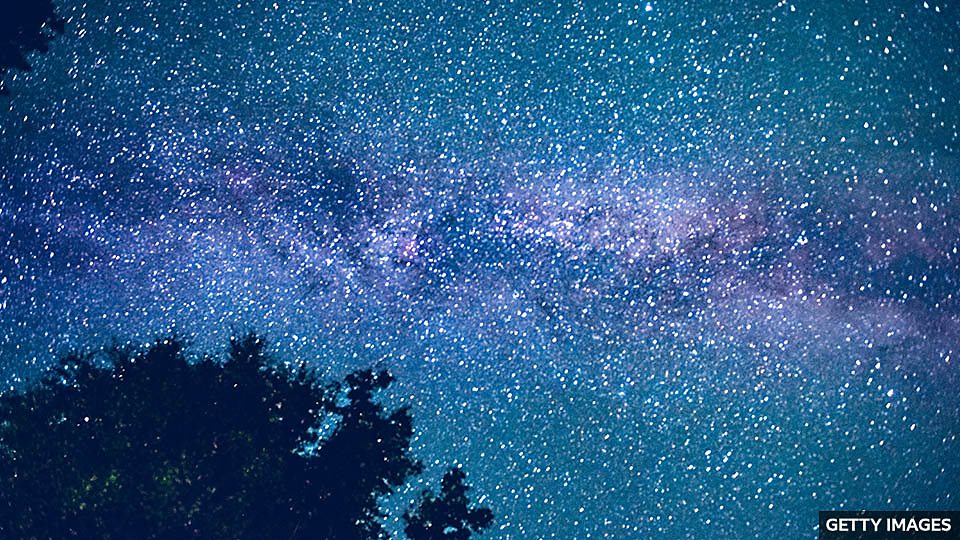一台埋在南极冰层中的探测器为人们了解银河系提供了一个前所未有的视角。研究人员们用收集到的数据制作了一张模糊而美丽的银河系图像,但这张图像其实是由 “幽灵粒子” 中微子组成的。
Neutrinos, or 'ghost particles' as they're known, are made when cosmic rays that are rattling around space at near light speed, smash into other matter. Astronomers say understanding where they come from is key to understanding the dynamics that shape the Milky Way.
中微子,又称 “幽灵粒子”,是当宇宙射线以接近光速的速度穿过太空大气层,撞击其它物质时产生的粒子。天文学家们表示,了解中微子的来源是了解导致银河系形成的动力学过程的关键。
But these short-lived particles are very difficult to detect, so scientists and engineers created an observatory that turned a cubic kilometre of Antarctic ice into a neutrino finder.
然而这些转瞬即逝的粒子很难被探测到,因此科学家和工程师们创建了一个天文台,将一立方公里的南极冰变成了中微子探测器。
The IceCube detector, as it's called, is made of thousands of sensors on long cables buried under the South Pole. Whenever a neutrino interacts with one of the billions of ice molecules, it captures that interaction and works out where that neutrino came from.
这个被称作 “冰立方” 的探测器是由埋在南极下的长电缆上的数千个传感器组成的。每当中微子与数十亿个冰分子中的一个相互作用时,探测器就会捕捉到这种相互作用,并找出中微子的来源。
The detectors produced the first evidence of these 'ghost particles' in our home galaxy, which the researchers say gives them an entirely new window on what's happening in the Milky Way.
探测器首次发现了在我们的银河系中存在这些 “幽灵粒子” 的证据,研究人员们对此表示,这个发现为他们了解银河系的奥秘打开了一扇窗。
词汇表
neutrinos 中微子
particles 粒子
cosmic rays 宇宙射线
light speed 光速
matter 物质
dynamics 动态,动力
short-lived 转瞬即逝的,短暂存在的
observatory 天文台
molecules 分子
galaxy 星系
阅读理解:请在读完上文后,回答下列问题。
1. What do cosmic rays smash into to create 'ghost particles'?
2. How long do 'ghost particles' last for?
3. What is the IceCube detector made of?
4. Where have 'ghost particles' been detected so far?
答案
1. What do cosmic rays smash into to create 'ghost particles'?
'Ghost particles' are made when cosmic rays smash into other matter.
2. How long do 'ghost particles' last for?
'Ghost particles' don't last long – the report says they are 'short-lived particles'.
3. What is the IceCube detector made of?
The IceCube detector is made of thousands of sensors on long cables.
4. Where have 'ghost particles' been detected so far?
The detectors have produced the first evidence of these 'ghost particles' in our home galaxy.


 3342次下载
点击下载
3342次下载
点击下载
 2621次下载 点击下载
2621次下载 点击下载
 4734次下载 点击下载
4734次下载 点击下载
 1854次下载 点击下载
1854次下载 点击下载
 1391次下载 点击下载
1391次下载 点击下载
 1391次下载 点击下载
1391次下载 点击下载











